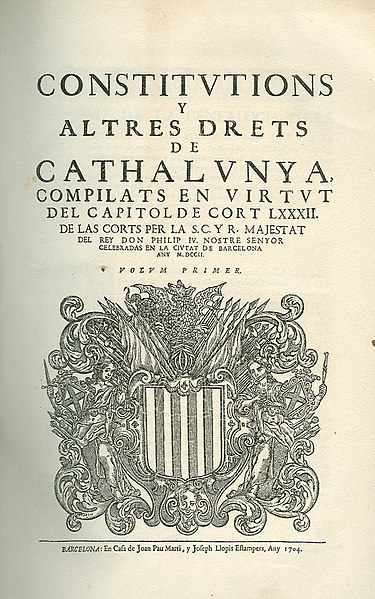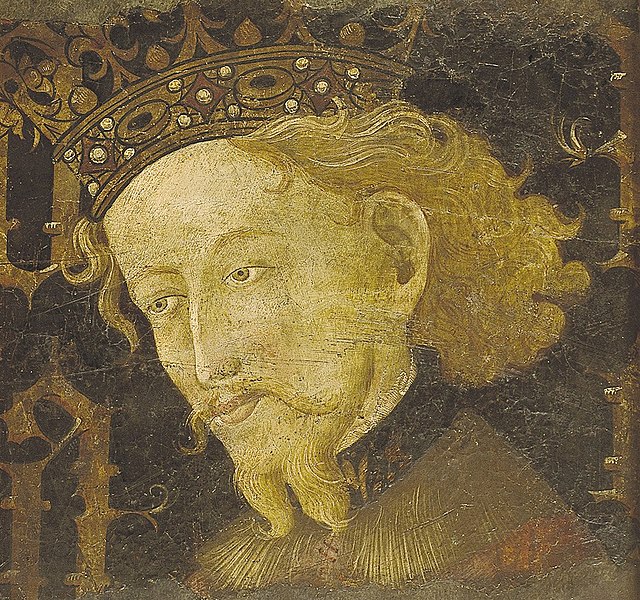The Catalan constitutions were the laws of the Principality of Catalonia promulgated by the Count of Barcelona and approved by the Catalan Courts. The Corts in Catalan have the same origin as courts in English but instead meaning the legislature. The first constitutions were promulgated by the Corts of 1283. The last ones were promulgated by the Corts of 1705. They had pre-eminence over the other legal rules and could only be revoked by the Catalan Courts themselves. The compilations of the constitutions and other rights of Catalonia followed the Roman tradition of the Codex.
Compilation of 1702
Compilation of 1493
Principality of Catalonia
The Principality of Catalonia was a medieval and early modern state in the northeastern Iberian Peninsula. During most of its history it was in dynastic union with the Kingdom of Aragon, constituting together the Crown of Aragon. Between the 13th and the 18th centuries, it was bordered by the Kingdom of Aragon to the west, the Kingdom of Valencia to the south, the Kingdom of France and the feudal lordship of Andorra to the north and by the Mediterranean Sea to the east. The term Principality of Catalonia was official until the 1830s, when the Spanish government implemented the centralized provincial division, but remained in popular and informal contexts. Today, the term Principat (Principality) is used primarily to refer to the autonomous community of Catalonia in Spain, as distinct from the other Catalan Countries, and usually including the historical region of Roussillon in Southern France.
Wilfred the Hairy, depicted in the Genealogy of the Kings of Aragon, c. 1400
Petronilla of Aragon and Ramon Berenguer IV, Count of Barcelona, dynastic union of the Crown of Aragon. 16th-century painting by Filippo Ariosto
James I the Conqueror
1702 compilation of Catalan Constitutions





